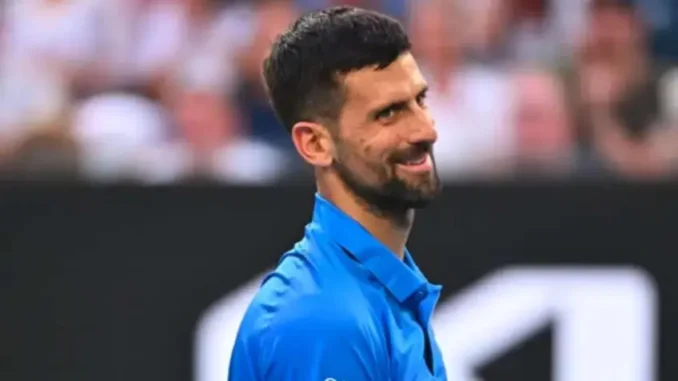
The tennis world, a stage where legends are forged and rivalries ignite, has recently witnessed a period of unexpected turbulence for one of its most dominant figures. Novak Djokovic, a name synonymous with unwavering consistency and relentless pursuit of excellence, has encountered a series of challenges that have sparked widespread discussion and analysis. A seasoned observer of the sport, Heinz Gunthardt, has offered his insights into the factors contributing to the player’s recent struggles, shedding light on the intricate dynamics at play.
The player, known for his meticulous preparation and unwavering mental fortitude, has faced a string of unexpected setbacks. His performances, while still displaying flashes of brilliance, have lacked the dominant edge that has defined his career. The question on everyone’s mind: what has led to this shift?
“It’s a combination of factors,” Gunthardt explained, his words reflecting a deep understanding of the sport’s complexities. “There’s no single explanation for what we’re seeing.”
One key aspect, he suggested, is the inevitable impact of time. Even the most exceptional athletes must contend with the gradual erosion of physical capabilities that accompanies aging. The relentless demands of the professional tennis circuit, with its grueling schedule and intense physical exertion, take a toll on the body.
“He’s not getting any younger,” Gunthardt stated, acknowledging the reality that even a player of Djokovic’s caliber cannot defy the laws of nature indefinitely. “The body doesn’t recover as quickly as it used to.”
Furthermore, the tennis landscape itself has evolved, with a new generation of players emerging to challenge the established order. These rising stars, armed with youthful energy and innovative playing styles, are pushing the boundaries of the sport, forcing veterans to adapt and evolve.
“The competition is getting tougher,” Gunthardt observed, highlighting the depth of talent within the current ranks. “The younger players are hungry, and they’re not afraid to take risks.”
The mental aspect of the game, a critical component of Djokovic’s success, has also come under scrutiny. The player’s unwavering focus and mental resilience have been hallmarks of his career, enabling him to overcome adversity and prevail in high-pressure situations. However, even the strongest minds can be affected by the pressures of competition and the weight of expectations.
“Mental fatigue is a real thing,” Gunthardt emphasized, acknowledging the toll that years of intense competition can take. “It’s not easy to maintain that level of focus and intensity all the time.”
The player’s recent schedule, marked by a series of high-profile tournaments and demanding travel, may have contributed to this mental strain. The relentless pursuit of titles and records can lead to burnout, even for the most dedicated athletes.
“He’s been playing a lot of tennis,” Gunthardt noted, suggesting that a period of rest and recovery might be beneficial. “Sometimes, you need to step back and recharge.”
The analysis also extended to the evolving dynamics of the player’s game. While his technical skills remain exceptional, opponents have begun to adapt to his style, developing strategies to neutralize his strengths.
“Players are figuring out how to play against him,” Gunthardt explained, highlighting the constant evolution of tactical approaches in the sport. “They’re finding ways to exploit his weaknesses.”
The player’s recent struggles have also sparked discussions about his motivation. After achieving nearly every conceivable accolade in the sport, the question arises: what drives him now?
“It’s hard to maintain that level of motivation when you’ve achieved so much,” Gunthardt acknowledged, suggesting that the player may be grappling with new challenges and goals. “But he’s a competitor, and he’ll always find a way to push himself.”
The analysis of the situation also takes into account the emotional burden of constant scrutiny. Every action, every statement, is dissected and analyzed, adding to the pressure faced by elite athletes.
“It’s a lot to deal with,” Gunthardt acknowledged, highlighting the challenges of living in the public eye. “Everyone has an opinion, and it can be difficult to tune out the noise.”
In essence, Gunthardt’s breakdown paints a picture of a complex interplay of physical, mental, and competitive factors. It is a reminder that even the greatest champions are subject to the ebbs and flows of performance, and that the pursuit of excellence is a constant process of adaptation and renewal.
Leave a Reply